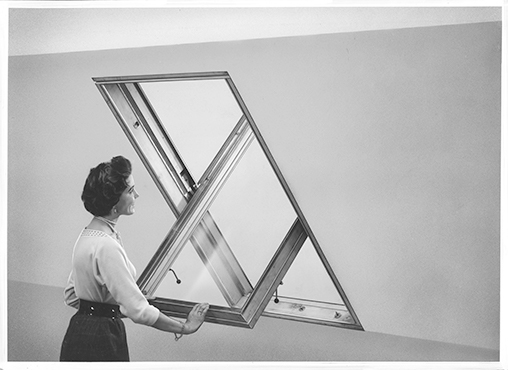The VELUX roof window was developed in 1942 by the Danish civil engineer Villum Kann Rasmussen (1909-1993). It was top-hung with a wooden frame and sash and an external zinc cladding. Incorporated were drainage channels for rainwater and it had a tight seal which meant it could be installed on a sloped roof. In 1945, Villum Kann Rasmussen developed a pivot hinge that made it possible to tilt the sash around a central axis without damaging the external cladding. This allowed both sides of the window to be cleaned from the inside.
VELUX roof windows have developed over time and are now high-tech windows with automatic solar-powered shading and automatic opening mechanisms, that regulate the room temperature and provide natural ventilation.

